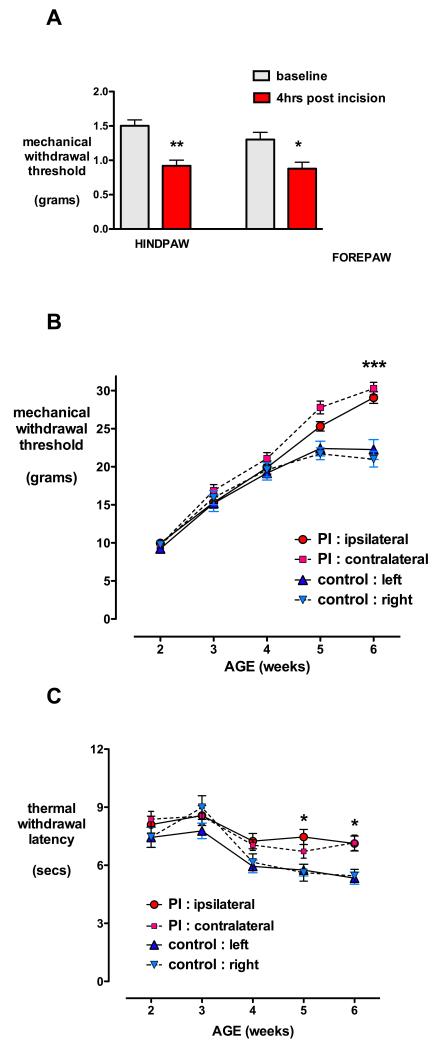Fig. 3.
Neonatal paw incision produces acute hyperalgesia but long-term generalized hypoalgesia. (A) Hindpaw or forepaw mechanical withdrawal thresholds were significantly reduced from baseline 4 h following plantar incision of postnatal day (P) 3. Bars=mean±SEM, n=7 per group, **P<0.01, *P<0.05 paired two-tailed Students t-test.
(B) Hindpaw mechanical withdrawal threshold and (C) thermal withdrawal latency are plotted against age following plantar hindpaw incision (PI) performed on postnatal day (P)3 (n=24), and in littermate non-incised controls (n=12). At 6 weeks of age, mechanical withdrawal thresholds and thermal withdrawal latencies were significantly increased in both the ipsilateral and contralateral paws following P3 incision when compared to age-matched controls. Data points = mean±SEM, ***P<0.001, *P<0.05 factorial repeated measures ANOVA with treatment as between-group variable and both time and paw as within-subject variables followed by Bonferrroni post-hoc comparisons.

